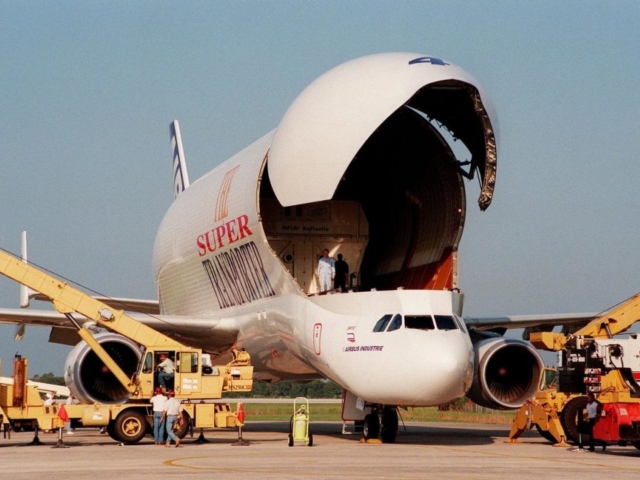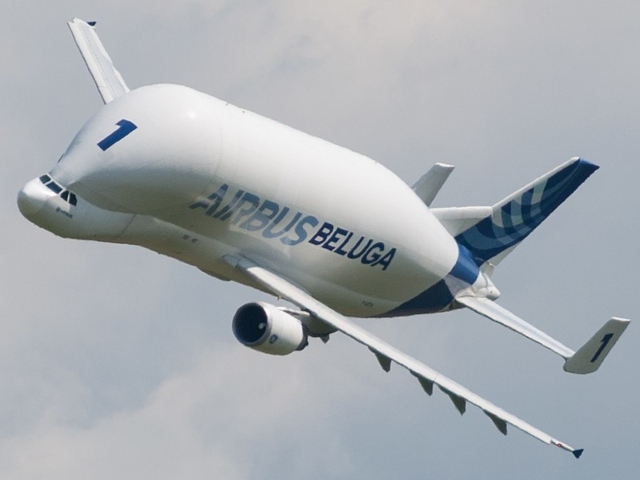[imagesource:wikipedia]
The latest addition to Airbus’ cargo fleet will be the last of the BelugaXLs, and it’s finally ready to rock and roll after serving as the test aircraft for the program since 2018.
The BelugaXL is not your average cargo plane. Operated by Airbus Transport International (ATI), these bad boys are like the FedEx of Airbus, shuttling aeroplane sub-assemblies and components between Airbus’ European manufacturing sites.
When Airbus commenced operations in 1970, ground vehicles were initially used to move components and sections; however, growth in production volume soon necessitated a switch to air transport. From 1972 onwards, a fleet of four highly modified Aero Spaceline “Super Guppies” took over.
Various options were considered as replacements for the Guppies, including the Antonov An-124, Boeing 747, and the McDonnell Douglas C-17 Globemaster III. Any of the existing planes were eventually ruled out due to a lack of internal space for the desired components. Eventually, an upgraded version of the Super Guppy fleet was the best option, and the Beluga ‘flying whales’ were designed.

This beast can handle the largest A350 fuselage or two of its massive 30-meter-long wings – double the load compared to its predecessor.
Besides boot space and power, few aeroplanes can beat the sight of the Beluga in flight. Watch a bit of their history in the below video:
Before this final BelugaXL hit the skies for ATI, it spent four years as a test aircraft, racking up over 800 flight test hours. Pilots put it through the wringer, testing how it handled all sorts of conditions it would face on its routes between 11 European destinations.
The BelugaXL program is however now officially closed. Launched in 2014, it brought together a dream team of around 1,000 Airbus engineers and suppliers in France.
Despite the mammoth project, there was pressure from Airbus to slash the original development cost in half and deliver the first aircraft within five years, the designers had to work their magic, cutting corners wherever possible and borrowing from other Airbus platforms that have been proven to work.
The BelugaXL will now be fully operational and on a tight schedule, with each delivery clocking in at an average turnaround time of just 70 minutes – thanks to specially designed loading facilities at plants across France, Germany, Spain, and the UK.
ATI plans to keep the BelugaXLs in the sky for the next thirty years, with the fleet expected to hit 9,500 flight hours annually by 2027. That’s a lot of miles flown and a lot of cargo delivered, but the Belugas are big boys and should be able to handle it.
If you have airfreight needs for which the BelugaXL might be overkill, we suggest you contact Berry & Donaldson Freight Forwarding to help you get your cargo to its destination. As a third-generation family-run logistics company, they specialise in international airfreight – albeit in slightly smaller aeroplanes than these.
[source:aircargonews]





